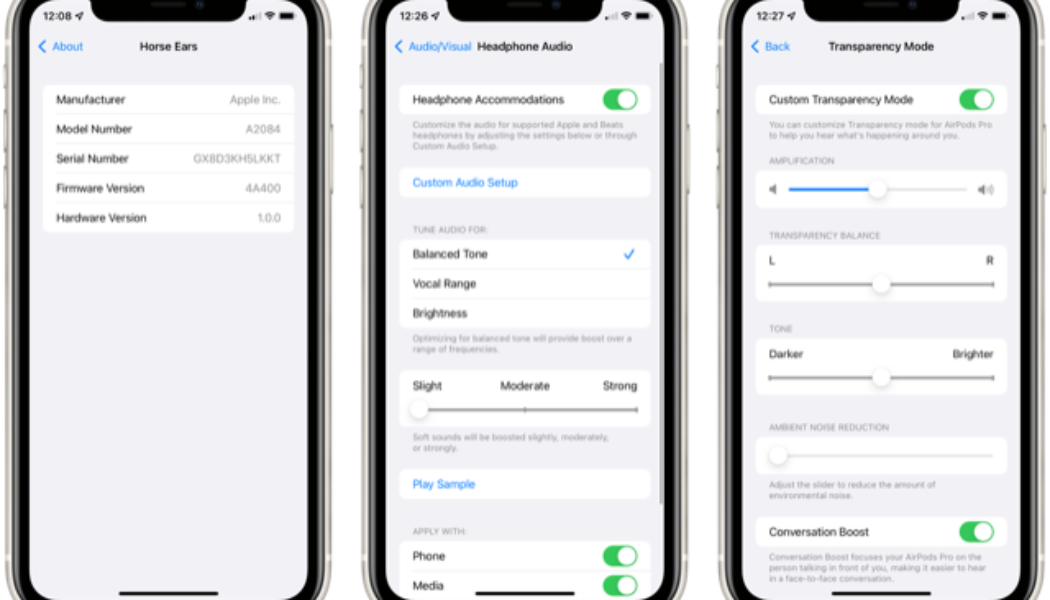Apple’s promised Conversation Boost feature that uses the AirPods Pro to make it easier to hear people’s voices is available now (via Macrumors). Support for the new feature was included as part of the same update that made it easier to find AirPods Pro and AirPods Max using the Find My app.
Conversation Boost is included as a Custom Transparency Mode in Apple’s headphone accommodations. When the feature is enabled, the beam-forming microphones on the AirPods Pro attempt to isolate voices above any background noise and other conversations. There’s also access to sliders to modify the amplification, transparency, and tone of what you hear.
:no_upscale()/cdn.vox-cdn.com/uploads/chorus_asset/file/22905796/Image__2_.PNG)
You can enable the feature for yourself using the following steps:
- Open Settings and tap on Accessibility.
- Tap Audio / Visual under the Hearing section.
- Toggle Headphone Accommodations to on.
- Tap Transparency Mode and toggle it on.
- Scroll down to Conversation Boost and turn it on.
Conversation Boost requires AirPods Pro running firmware “4A400.” Unfortunately there’s still no manual way to force an update on your AirPods, AirPods Pro, or AirPods Max, but you can check if you’re already running the new firmware in the Settings app:
- Tap General, then About.
- Find and tap on the AirPods connected to your device.
- Check the firmware number next to the field labeled Firmware Version.
Conversation Boost is just the latest accessibility feature Apple has added to its devices in the last year. Earlier in May, the company revealed a slew of new updates, including the ability for the Apple Watch to accept muscle movements as an input method, and support for third-party eye-tracking devices on the iPad.








